HTML
--> --> -->Other basic characteristics are essential means for a better understanding of the new branches of nuclear physics, such as nuclear structures [11-14], the compound-nucleus mechanism of nuclear reactions including nuclear fission and fusion [15]. For example, one-nucleon and two-nucleon separation energies are regarded as a direct way of testing shell closure [15, 16] and further for finding new candidates for magic numbers in super-heavy nuclei. Decay energies, contained
The limitation or lack of experimental technique in aforementioned studies led to many types of theoretical mass models, where other basic characteristics can be determined.
The nuclear binding energy for a nucleus is given by
Recently, we developed a new macroscopic-microscopic Weizs?cker-Skyrme-type mass model [56, 63, 64], now referred to as the WS-type model, in which the pairing energy dealt with the Bardeen-Cooper-Schrieffer (BCS) theory [24], and ultimately the shell and pairing effects were integrated into the Strutinsky method [65, 66]. With the help of the two combinatorial radial basis functions (RBFs) corrections [67] (inspired by the radial basis function approach [64, 68–71]), the WS-type mass formula is further improved. With the publication of the new mass table (AME2016), more unknown nuclei can be extrapolated within the improved mass model and the RBFs correction, where these updated experimental data serve as new inputs in the RBFs correction.
The remainder of this paper is organized as follows: A detailed description of the Weizs?cker-Skyrme-type mass model and the two combinatorial RBFs corrections are presented in Section 2. In Section 3, the experimental binding energies of 2267 known nuclei (green squares in Fig. 1) and the additional 136 nuclei (violet balls) are used as inputs to the WS-type model, and other mass formulae are trained by the RBFs corrections. Some systematic calculations for the known and the extrapolated 12435 nuclei (green open squares) are extracted from the improved WS-type mass model, including the ground state deformations
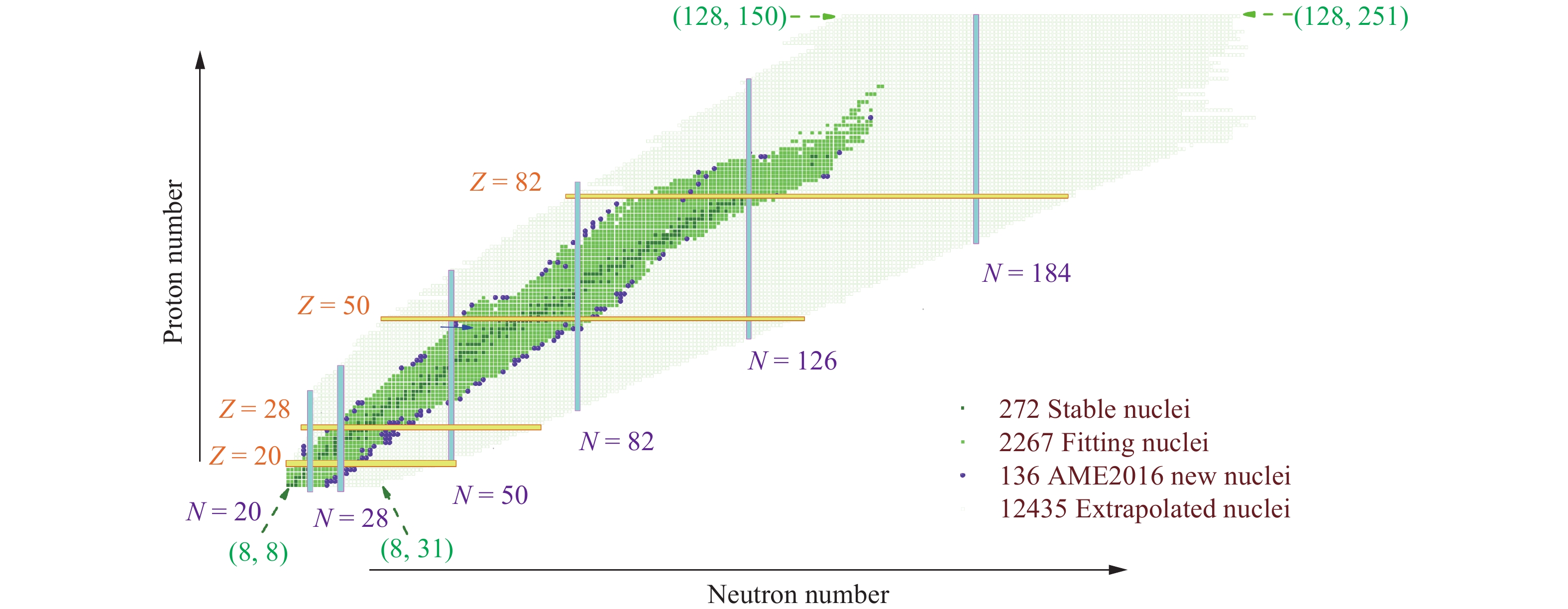 Figure1. (color online) Nuclear landscape in this study, dark green squares denote 272 stable nuclei in AME2012; green squares represent 2267 nuclei selected to fit mass formula; additional 136 nuclei are labeled by violet balls, and the extrapolated 12435 nuclei are marked as open green squares.
Figure1. (color online) Nuclear landscape in this study, dark green squares denote 272 stable nuclei in AME2012; green squares represent 2267 nuclei selected to fit mass formula; additional 136 nuclei are labeled by violet balls, and the extrapolated 12435 nuclei are marked as open green squares.2
2.1.Original WS-type mass model
The pairing correction in the Weizs?cker-Skyrme model [72] was$\delta_{{\rm np}}=\left\{ \begin{array}{*{20}{l}}2-|I|, \;\;\;& {N \; {\rm {and}} \; Z \; {\rm{even}}}\\|I|, \;\;\; &{N \;{\rm {and}} \; Z \; {\rm{odd}}}\\1-|I|, \;\;\; & {N \; {\rm{even}}, \; Z \; {\rm{odd}}, \; {\rm {and}} \; N>Z}\\1-|I|, \;\;\; &{{N \; {\rm{odd}}, \; Z \; {\rm{ even}}, \; {\rm {and}} \; N<Z}}\\1, \;\;\; &{{N \; {\rm{even}}, \; Z \; {\rm{ odd}}, \; {\rm {and}} \; N<Z}}\\1, \;\;\; &{{N \; {\rm{odd}}, \; Z \; {\rm{even}}, \; {\rm {and}} \; N>Z.}}\end{array} \right.$ |
$B(Z, A, \beta_k)= B_{{\rm{LDM}}}\prod_{k\geqslant 2}(1+b_k^2\beta_k^2) + B_{{\rm{Mic}}}(Z, A, \beta_k), $ | (1) |
3
2.1.1.Macroscopic energy
Experimental results show that most nuclei displayed different deformations. Ref. [72] mentioned that, considering only axially deformed cases, the effects of nuclear deformation on the macroscopic energy exhibit a parabolic approximation, if the Skyrme energy-density function and the extended Thomas-Fermi approximation (ETF) were considered together. They had verified this parabolic approximation by calculating the binding energy ($b_k = \left(\frac{k}{2}\right)g_1A^{1/3}+\left(\frac{k}{2}\right)^2g_2A^{-1/3}, \;\; k =2, 4, 6.$ | (2) |
By considering the deformation effect (hence, our model is called Weizs?cker-Skyrme-type model), the extended macroscopic energy was expressed as
$\begin{split}B_{{\rm{Mac}}}(Z, A, b_k, \beta_k)=& [B_{\rm{Vol}}+B_{\rm{Surf}}+B_{\rm{Col}}+B_{\rm{Asy}}] \\& \displaystyle\prod_{k\geqslant 2}\left(1+b_k^2\beta_k^2\right), \end{split}$ | (3) |
$\left\{ \begin{aligned}&B_{\rm{Vol}} =a_\nu(1+k_\nu I^2)A,\\ &B_{\rm{Surf}} =a_s(1+k_s I^2)A^{\frac{2}{3}},\\ &B_{\rm{Coul}} =a_c\displaystyle\frac{Z^2}{A^{\frac{1}{3}}}(1-0.76Z^{-2/3}),\\ &B_{\rm{Asy}} =c_1\displaystyle\frac{2-|I|}{2+|I|A}I^2A.\end{aligned} \right.$ |
For consistency of parameters in the model between the macroscopic and microscopic parts, the isospin-dependent component of the macroscopic energy, including the asymmetrical part in volume term
$a_\nu k_\nu+a_s k_s/A^{1/3}+c_1\frac{(2-|I|)}{(2+|I|A)}\approx V_{s}.$ | (4) |
3
2.1.2.Simultaneous calculation of the shell and pairing correction
To calculate the microscopic energy, one should diagonalize the Hamiltonian in axially deformed harmonic oscillator bases, where the code WSBETA [78] is applied. Single-particle levels and shell energy are calculated with the Strutinsky procedure.An axially deformed Woods-Saxon potential depth is used in the calculation of the microscopic part. The central potential V takes the form of
$V=\frac{V_{{\rm{depth}}}}{1+{\rm{exp}}\left(\displaystyle\frac{r-R}{a}\right)}, $ | (5) |
Whilst the isospin-orbit potential
$V_{{\rm{so}}}=\lambda\left(\frac{\hbar}{2Mc}\right)^2\times \left\{\nabla \frac{V_{{\rm{depth}}}}{1+{\rm{exp}}\left(\displaystyle\frac{r-R}{a}\right)}\right\}\cdot(\vec\sigma\times \vec{p}), $ | (6) |
The total single-particle Hamiltonian in this code was expressed as
$H = T + V+ V_{{\rm{so}}}.$ | (7) |
$g(\varepsilon) =\sum\limits_{i=1}^Md_i\delta(\varepsilon-\varepsilon_i), $ | (8) |
$\bar g(\varepsilon) =\frac{1}{\gamma}\sum\limits_{i=1}^Md_iK\left(\frac{\varepsilon-\varepsilon_i}{\gamma}\right), $ | (9) |
The standard BCS method is utilized to evaluate the pairing energy. The simplest seniority-type pairing force, the pairing interaction
$\frac{2}{G}= \sum^M_{i=1}\frac{1}{\sqrt{(\epsilon_i-\lambda_{{\rm{BCS}}})^2+\Delta^2}}, $ | (10) |
$N= \sum^M_{i=1}\left[1-\frac{\epsilon_i-\lambda_{{\rm{BCS}}}}{\sqrt{(\epsilon_i-\lambda_{{\rm{BCS}}})^2+\Delta^2}}\right].$ | (11) |
$\frac{2}{G}=\frac{1}{2}\int^\infty_{-\infty}\frac{1}{\sqrt{(\epsilon-\bar\lambda_{{\rm{BCS}}})^2+\bar\Delta^2}}\bar g(\epsilon){\rm d}\epsilon, $ | (12) |
$N=\frac{1}{2}\int^\infty_{-\infty}\left[1-\frac{\epsilon-\bar\lambda_{{\rm{BCS}}}}{\sqrt{(\epsilon-\bar\lambda_{{\rm{BCS}}})^2+\bar\Delta^2}}\right]\bar g(\epsilon){\rm d}\epsilon.$ | (13) |
$\begin{array}{l}B_{\rm{BCS}}=\displaystyle\sum^M_{i=1}\left(1-\displaystyle\frac{\epsilon_i-\lambda_{\rm{BCS}}}{\sqrt{(\epsilon_i-\lambda_{\rm{BCS}})^2+\Delta^2}}\right)\epsilon_i-\displaystyle\frac{\Delta^2}{G}, \\\bar B_{\rm{BCS}}=\displaystyle\frac{1}{2}\displaystyle\int_{-\infty}^{\infty}\left[1-\displaystyle\frac{\epsilon_i-\bar\lambda_{\rm{BCS}}}{\sqrt{(\epsilon_i-\bar\lambda_{\rm{BCS}})^2+\bar\Delta^2}}\right]\epsilon\bar g(\epsilon){\rm d}\epsilon-\displaystyle\frac{\bar\Delta^2}{G}, \end{array}$ |
The final average value
$B_{\rm p} =B_{{\rm{BCS}}}-B_{\rm{s.p.}}, $ | (14) |
$\bar B_{\rm p} =\bar B_{{\rm{BCS}}}-\bar B_{\rm{s.p.}}.$ | (15) |
The pairing correction is defined as the difference between the pairing energy
$B_{\rm{Pair}}= B_{\rm p}-\bar B_{\rm p}, $ | (16) |
$B_{\rm{Shell}}= B_{\rm{s.p.}}-\bar B_{\rm{s.p.}}.$ | (17) |
$\begin{array}{l}B_{\rm{Mic}}= B_{\rm{Pair}}+B_{\rm{Shell}} = B_{\rm{BCS}}-\bar B_{\rm{BCS}}.\end{array}$ | (18) |
$B_{\rm{Mic}}=f_1B_{\rm{Mic}}+|I|B'_{\rm{Shell}}.$ | (19) |
2
2.2.Two combinatorial radial basis functions correction
The RBF approach [68, 69] as one of image reconstruction techniques has been adopted in the mass formula to improve the accuracy of nuclear binding energies [64, 70]. One would expect that the other physical observable could be improved at the same time. However, this fails to account for odd-even staggering (OES) of binding energies captured by nuclear mass, which is generally utilized to characterize the nuclear pairing correlation. One-nucleon separation energy also deteriorated. Two combinatorial radial basis function prescriptions (with the name of RBFs correction [65]) as a well-handled RBF approach assimilated the virtues of RBF approach and added the odd-even effects simultaneously. The RBFs approach has shown significant improvements with respect to the above-mentioned physical quantities of nuclei in Ref. [65].First, the operation of the general RBF approach must be known. For a given nucleus, the reconstructed smooth function
$S(x)=\sum\limits_{i=1}^{m}\omega_i\phi(||x-x_i||), $ | (20) |
$r=\sqrt{(Z_i-Z_j)^2+(N_i-N_j)^2}.$ | (21) |
$\left(\begin{array}{c}\omega_1\\\omega_2\\\cdots\\\omega_m\end{array}\right)=\left(\begin{array}{cccc}\phi_{11} & \phi_{12} & \cdots & \phi_{1m}\\\phi_{21} & \phi_{22} & \cdots & \phi_{2m} \\\cdots & \cdots & \cdots & \cdots\\\phi_{m1} & \phi_{m2} & \cdots & \phi_{mm}\end{array}\right)^{-1}\left(\begin{array}{c}f_1\\f_2\\\cdots\\f_m\end{array}\right), $ | (22) |
Inserting the weight
As the first step, for a given nucleus, 2266 known binding energies of nuclei in the atomic mass evaluation of 2016 (AME2016) [6–8] are used to train the RBF approach. Thus, m = 2266 and
$B_{\rm{RBF}}(Z_i, N_i)=B_{\rm{Orig}}(Z_i, N_i)+S_{\rm{Orig}}(Z_i, N_i).$ | (23) |
In the second step, according to the odd-even property, 2267 nuclei are divided into four categories: even-even, even-odd, odd-even, odd-odd. For a given nucleus, the congeneric nuclei are employed to train the RBF correction again. This means that the value of m depends on the number of congeneric nuclei. Deviations
$S_{\rm{Total}}(Z, N)=S_{\rm{Orig}}(Z, N)+S_{\rm{oe}}(Z, N), $ | (24) |
$B_{\rm{RBFs}}(Z, N)=B_{\rm{Orig}}(Z, N)+S_{\rm{Total}}(x).$ | (25) |
2
2.3.Numerical details and model parameters
There are 13 adjustable parameters: 8 parameters (The first step is the selection of the experimental binding energies of the known nuclei. In our model, 2267 selected nuclei [green squares in Fig. 1] are used to fit the 13 model parameters. All selected nuclei satisfied two conditions: N and Z are larger than 7, and the standard deviation uncertainty on the mass is lower than or equal to 150 keV, as in Ref. [5].
The second step is inputting a set of deformation values for 2267 nuclei. By varying these 13 adjustable parameters and searching for the minimal deviation of the 2267 nuclear masses from experimental data by using a nonlinear least squares fitting procedure, these new 13 parameters are fixed to calculate the deformation of nuclei. Thereby, the first round is finished. The second round is the repetition of the operations in the first round. The new parameters and deformations are taken as new inputs in every repetitive operation, until the rms deviation becomes minimal.
The third step involves proceeding with the RBFs correction (here, taking the new atomic mass evaluation (AME2016) in Ref. [6] as inputs).
3.1.Nuclear binding energy of improved WS-type model
In our model, the optimal rms deviation between the calculated nuclear binding energies and the experimental ones is 493 keV, and the average discrepancy is ?0.0108 MeV [56]. The corresponding parameters are listed in Table 1.  |   |   |   |   |   |   |
| 15.4654 | ?1.8391 | ?17.1929 | ?2.0516 | ?0.7082 | ?28.2525 | 0.0093 |
  |   |   |   |   |   | |
| ?0.4015 | ?44.9430 | 1.3880 | 0.7765 | 27.8003 | 0.8557 |
Table1.Thirteen model parameters of Weizs?cker-Skyrme-type mass formula.
The rms deviations of the improved model with RBFs correction are reduced to 149 keV. The deviations between the experimental and calculated binding energies are plotted in Fig. 2(a) and (b), respectively. Some obvious differences appear along with the closed shell and the collectively-deformed region in Fig. 2(a). With the RBFs correction, almost all deviations in Fig. 2(b) tightly populate the area between 0.25 and –0.25 MeV and become smaller than the deviations in Fig. 2(a). Especially in the region near the neutron and /or proton magic numbers, significant improvements have been achieved. This indicates that the original WS-type model does not function optimally in these regions. Fig. 2(c) displays the reconstructed smooth function
 Figure2. (color online) Contour map of differences between experimental and calculated binding energies for 2267 nuclei as a function of neutron and proton number. Horizontal and vertical dot-dashed lines denote neutron and proton magic numbers. (b) As in (a), but for improved WS-type model with RBFs correction. (c) Total reconstructed smooth function
Figure2. (color online) Contour map of differences between experimental and calculated binding energies for 2267 nuclei as a function of neutron and proton number. Horizontal and vertical dot-dashed lines denote neutron and proton magic numbers. (b) As in (a), but for improved WS-type model with RBFs correction. (c) Total reconstructed smooth function Six isotopes, O, Ca, Fe, Ba, Au, U, are chosen as examples in Fig. 3 to show the behaviors of six terms along with the increasing neutron number N in mass formula: the volume term
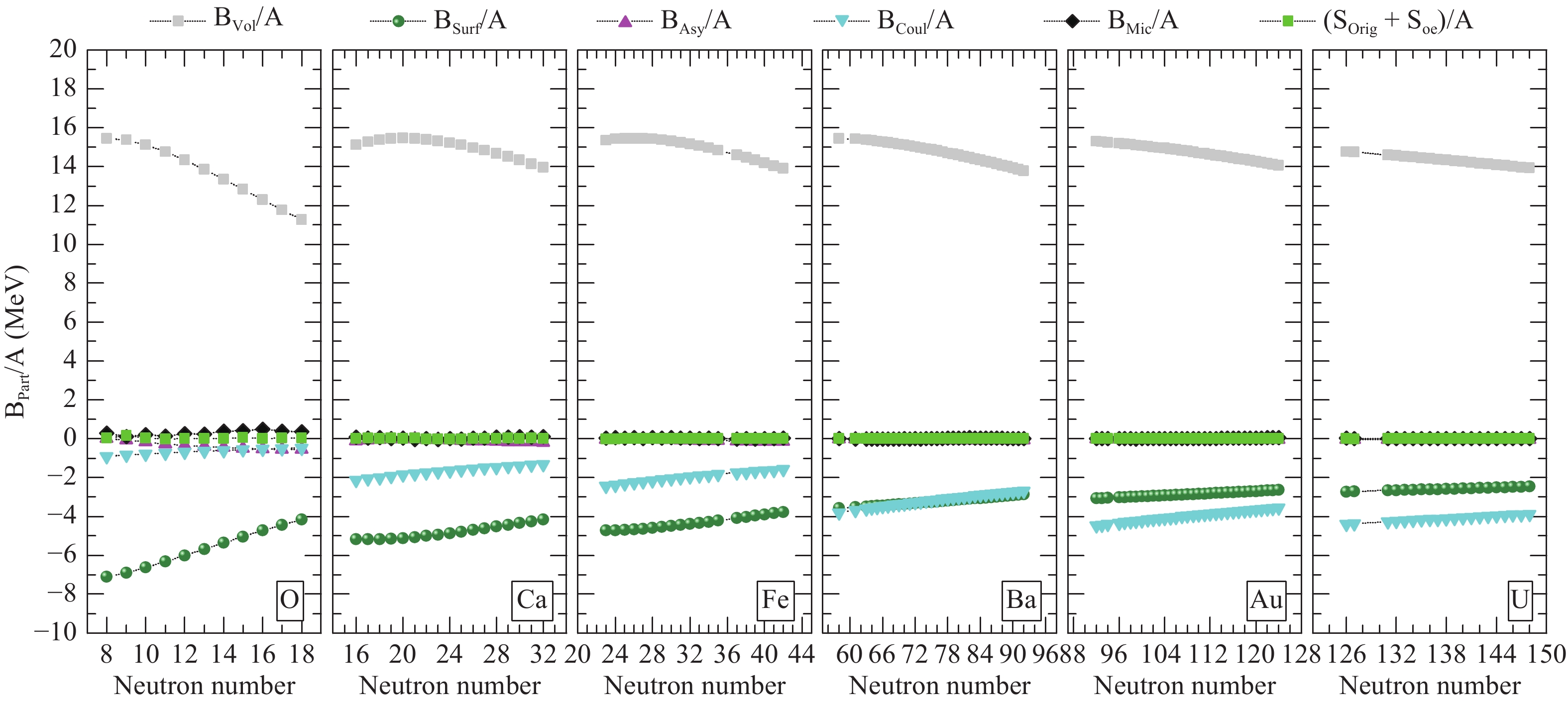 Figure3. (color online) Six terms of total binding energy per nucleon in MeV. Light gray squares and dark green balls represent volume energy
Figure3. (color online) Six terms of total binding energy per nucleon in MeV. Light gray squares and dark green balls represent volume energy Furthermore, the 136 newly added nuclei in AME2016 [6] (compared with the atomic mass evaluation (AME2012) [5]) are used to investigate the effect of the RBFs correction. The spheres in Fig. 4 indicate the distributions of the additional 136 nuclei (
 Figure4. (color online) Two kinds of deviations between measured binding energies (in AME2016) and WS-type model predictions with/without the RBFs correction for 136 new added nuclei. Black balls denote the deviations of
Figure4. (color online) Two kinds of deviations between measured binding energies (in AME2016) and WS-type model predictions with/without the RBFs correction for 136 new added nuclei. Black balls denote the deviations of 2
3.2.Other nuclear mass formulae
With the incorporation of the RBFs correction, Fig. 5 gives insight into the dependence of the rms deviations on the sectionalized subregions for other mass models, i.e. WS-type, DZ31 [52], FRDM [16], WS4 [55], Bhagwat [61], and RMF [47]. Similar to the partitions in Ref. [56], the global region ( Figure5. (color online) Two kinds of rms deviations calculated using original six models (blue stars) and improved models with RBFs correction (magenta balls) for five subregions, global (all nuclei with
Figure5. (color online) Two kinds of rms deviations calculated using original six models (blue stars) and improved models with RBFs correction (magenta balls) for five subregions, global (all nuclei with Four main results are summarized in Fig. 5: (i) the WS4 model gives the best description without the RBFs correction (blue stars) compared to other models; (ii) all rms deviations of the six models with the RBFs correction (magenta balls) are reduced to 100–200 keV in the global region; (iii) these dependences show similar behaviors for the WS-type, DZ31, FRDM, WS4, and Bhagwat models with/without the RBFs approach. The RMF model shows different trends from the other five models; (iv) all of the deviations within the RBFs correction show similar trends in the six models.
There are additional 37 nuclei in the region where
 Figure6. (color online) Distributions of newly added 37 nuclei in H subregion (
Figure6. (color online) Distributions of newly added 37 nuclei in H subregion (4.1.The extrapolation of 12435 nuclei
After testing the availability of the RBFs correction by introducing it into the original mass models, the ultimate aim in this study is to calculate some basic characteristics of the 12435 nuclei (In the WS-type model, the effects of nuclear deformation play a very important role in the description of nuclear binding energy. A deformed shape weakens the Coulomb energy and enhances the nuclear surface energy relative to a spherical one. In Fig. 7, we show the calculated ground state deformations of each nucleus with the WS-type model for all 12435 nuclei [see Eq. (2)]. Clearly, (i) the global amplitudes of the quadrupole deformation
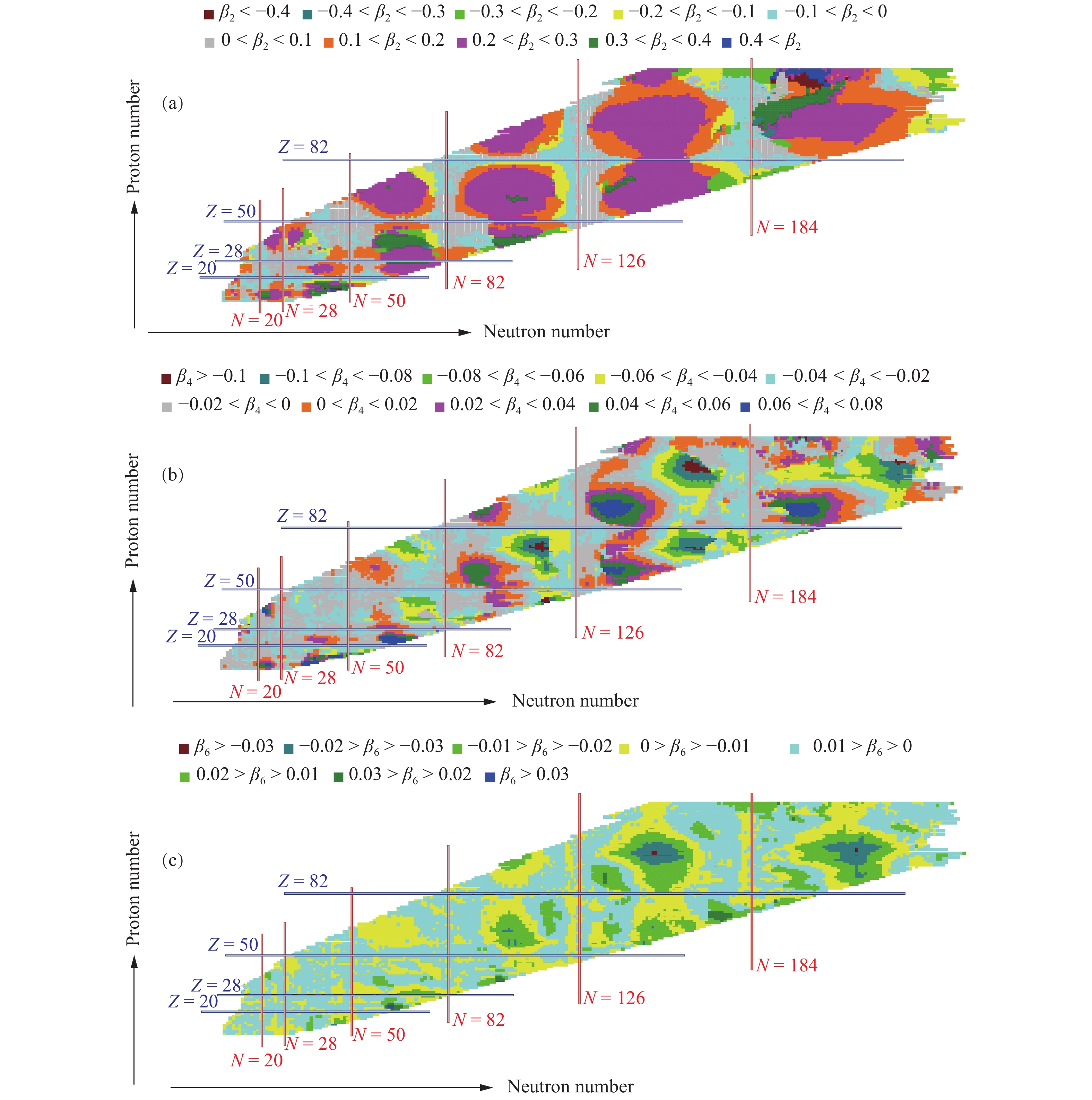 Figure7. (color online) Three groups of deformations for 12435 nuclei, i.e. quadrupole deformations
Figure7. (color online) Three groups of deformations for 12435 nuclei, i.e. quadrupole deformations For a given nucleus, six terms are included in the improved WS-type mass formula. They are the volume term, surface term, Coulomb term, asymmetry term and the microscopic term, as well as the total reconstructed smooth function. As in Fig. 3, Fig 8 displays the global behaviors of the aforementioned terms in a nuclear chart. It is observed that (i)
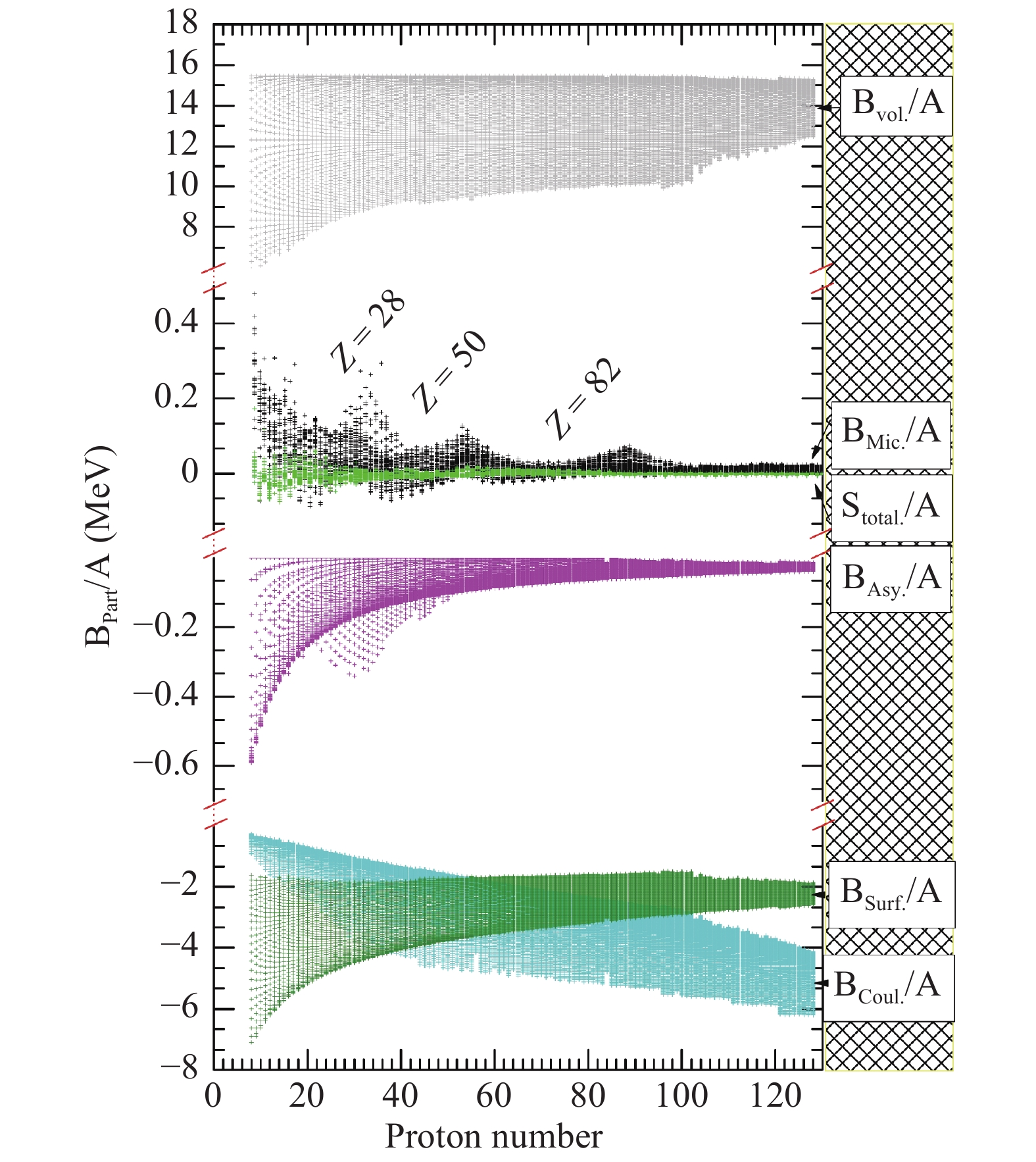 Figure8. (color online) Six ingredients per nucleon of total binding energy for extrapolated 12435 nuclei are shown [same as Fig. 3]. Gray, cyan, dark green, black, and magenta balls, and green squares represent volume, surface, Coulomb, asymmetry, microscopy terms and the total reconstructed smooth function, respectively. Z = 28, 50, and 82 denote proton magic numbers.
Figure8. (color online) Six ingredients per nucleon of total binding energy for extrapolated 12435 nuclei are shown [same as Fig. 3]. Gray, cyan, dark green, black, and magenta balls, and green squares represent volume, surface, Coulomb, asymmetry, microscopy terms and the total reconstructed smooth function, respectively. Z = 28, 50, and 82 denote proton magic numbers.2
4.2.One-nucleon and two-nucleon separation energies
Generally, the statistical observable${\sigma _{{\rm{rms}}}} = \sqrt {\frac{1}{n}\sum\nolimits_{i = 1}^n | {B_{{\rm{Calc}}}} - {B_{{\rm{Expt}}}}{|^2}} ;$ | (26) |
${\cal{D}} = \frac{1}{n}\sum\nolimits_{i = 1}^n {[{B_{{\rm{Calc}}}} - {B_{{\rm{Expt}}}}]} , $ | (27) |
One-nucleon and two-nucleon separation energies indicate how difficult it is to peel off one and two nucleons from the parent nucleus. Hence one- and two-neutron (proton) separation energies can be extracted from the nuclear binding energy by using the definition
As mentioned before, when the general radial basis function is used to train the mass formula, the rms deviations of one-nucleon separation energy became larger than that of the original mass formula. Hence, we check the behavior of the one-neutron (proton) separation energy in the global nuclear chart.
Odd-even properties of nuclei are applied to divide 2267 nuclei into four categories, i.e. even (Z)-even (N), even-odd, odd-even, and odd-odd. The deviations between calculated one-neutron separation energies and experimental ones as functions of neutron and proton numbers are demonstrated in Fig. 9. Sub-graphs in the left column denote the deviations from the original WS-type mass formula. The right column depicts the WS-type with the RBFs correction. For even (Z)-even (N) nuclei, many deviations from the WS-type model are greater than 0.25 MeV, while the data for even-odd nuclei are less than ?0.25 MeV. By applying the RBF method, almost all deviations for four groups in the right column are smaller than that of data in the left column to a great extent. Furthermore, as we expected, the one-neutron separation energy for four groups in the left column exhibits the same behaviors and is in broad agreement with the experimental separation energy.
 Figure9. (color online) Two types of deviations (
Figure9. (color online) Two types of deviations (The results of the one-proton and one-neutron separation energies are same, and they are plotted in Fig. 10. In contrast to the deviations in the left column in Fig. 9, this time, the data in the odd (Z)-even (N) group are less than –0.25 MeV. After incorporating the RBFs correction, the deviations of four groups in the right column are sharply reduced and, simultaneously, almost populated the area between 0.25 and ?0.25 MeV.
 Figure10. (color online) Same as caption of Fig. 11, but for one-proton separation energy.
Figure10. (color online) Same as caption of Fig. 11, but for one-proton separation energy.Detailed rms deviations
| models |   |   |   |   |
  | ||||
| WS-type | 360 | 503 | 444 | 520 |
| WS-type + RBFs | 139 | 145 | 162 | 153 |
| models |   |   |   |   |
  | ||||
| WS-type | ?14.24 | 13.31 | 25.42 | ?22.65 |
| WS-type + RBFs | 1.18 | ?2.72 | 0.31 | ?1.23 |
Table2.Statistical observable
Exploring the extreme cases of the proton-to-neutron ratio in a nucleus, in which protons and neutrons are bound by strong nuclear and the Coulomb forces, is an important topic in nuclear physics. This is related to the limits of the nuclear landscape. Neutron and proton drip-lines denote the boundaries delimiting the existence of stable nuclei. For each isotopic (isotonic) chain, the nucleon (proton) drip line on the neutron (proton)-rich side is at the extreme of this ratio and no stable nuclei can exist. One- and two-nucleon separation energies provide a direct judgment for these limits, i.e. if both the one- and two-nucleon separation energies for a given nucleus are positive, this nucleus is stable.
Due to the powerful extrapolation ability of macroscopic-microscopic nuclear mass formulae, one can extrapolate nuclear mass for many known nuclei based on these theoretical mass models. Here, we extrapolate the nuclear binding energies of 12435 nuclei (
 Figure11. (color online) One-neutron and one-proton separation energies for 12435 nuclei, scaled by colors. Double lines denote traditional neutron and proton magic numbers. Dark green squares represent 272 stable nuclei.
Figure11. (color online) One-neutron and one-proton separation energies for 12435 nuclei, scaled by colors. Double lines denote traditional neutron and proton magic numbers. Dark green squares represent 272 stable nuclei.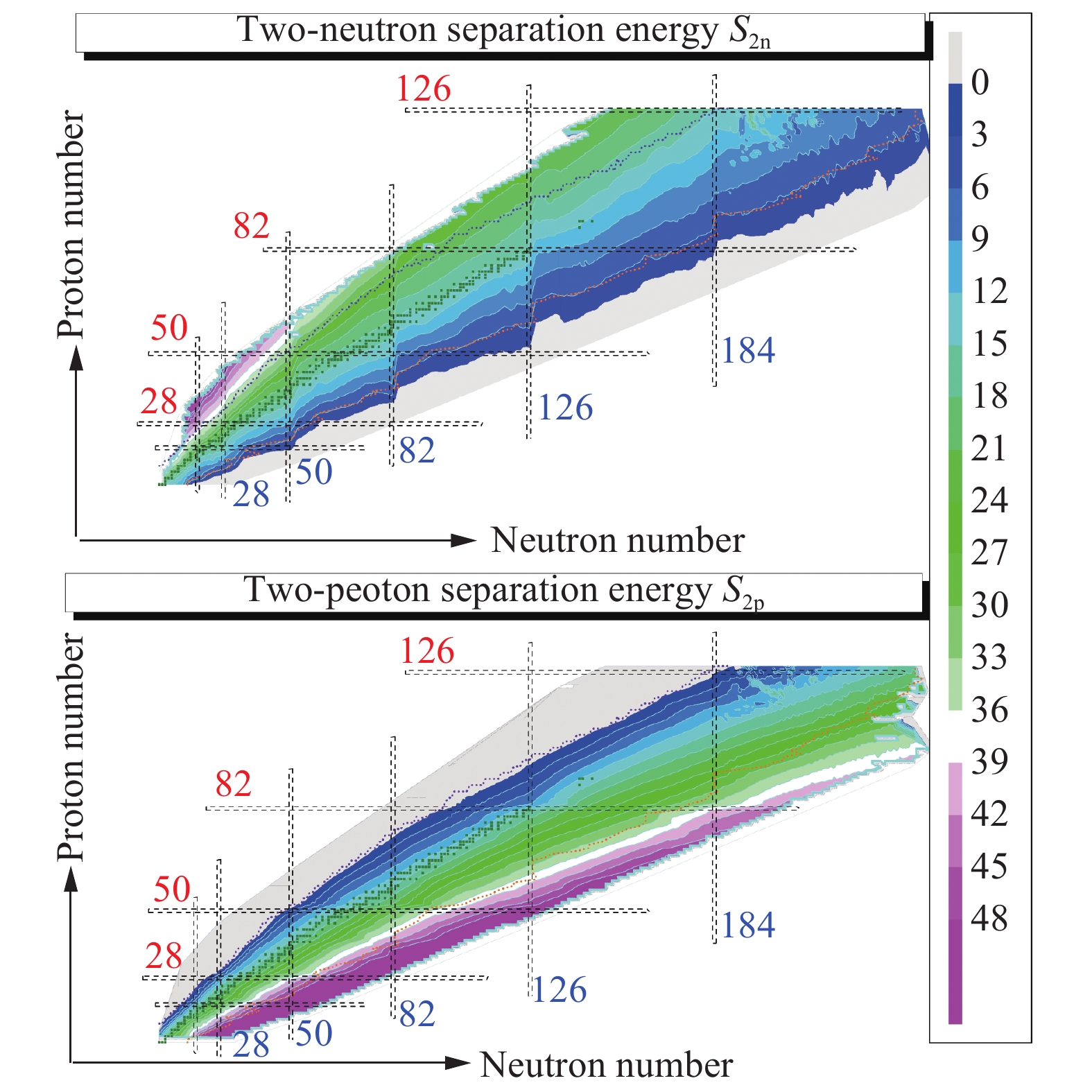 Figure12. (color online) Consistently with Fig. 11, but for two-neutron (proton) separation energy. This time, contour plots are used.
Figure12. (color online) Consistently with Fig. 11, but for two-neutron (proton) separation energy. This time, contour plots are used.With the behavior of the neutron separation energy, here we can further determine the neutron drip-line by using
2
4.3.alpha- and beta-decay energy
Between the neutron and proton drip-lines, nuclei have a reasonable probability to exist, and they preferably emit nucleons, such as alpha- and beta-particles, close to the valley of stability. The stability and radioactive decay of a nucleus are further related to the prediction of the 'island of stability' of superheavy nuclei (SHN) and their synthesis. Generally, several decay forms appear in many SHN, such asFor heavy and superheavy nuclei,
$Q_{\alpha}=B(\alpha)+B(Z-2, A-4)-B(Z, A), $ | (28) |
Another important decay form is beta-decay. There are three types of beta-decay:
$Q_{\beta^-}=B(Z, A)- B(Z+1, A), $ | (29) |
$Q_{\beta^+}=B(Z, A)- B(Z-1, A), $ | (30) |
$Q_{\rm{EC}}=B(Z, A)- B(Z-1, A)-B_{\rm e}, $ | (31) |
We extract the values of alpha- and beta-decay energies from the calculation of WS-type mass formulae with two combinatorial RBFs corrections. As in the one- and two-nucleon separation energies, we first tabulate the rms deviations
| models |   |   |   |   |
  | ||||
| WS-Type | 464 | 504 | 503 | 504 |
| WS-Type+RBFs | 230 | 222 | 222 | 222 |
| models |   |   |   |   |
  | ||||
| WS-Type | 13.78 | 20.35 | ?21.17 | ?20.59 |
| WS-Type+RBFs | 0.65 | ?1.56 | 1.58 | 1.55 |
Table3.Values of
Compared with the results from the original WS-type model, one can find the rms deviations of
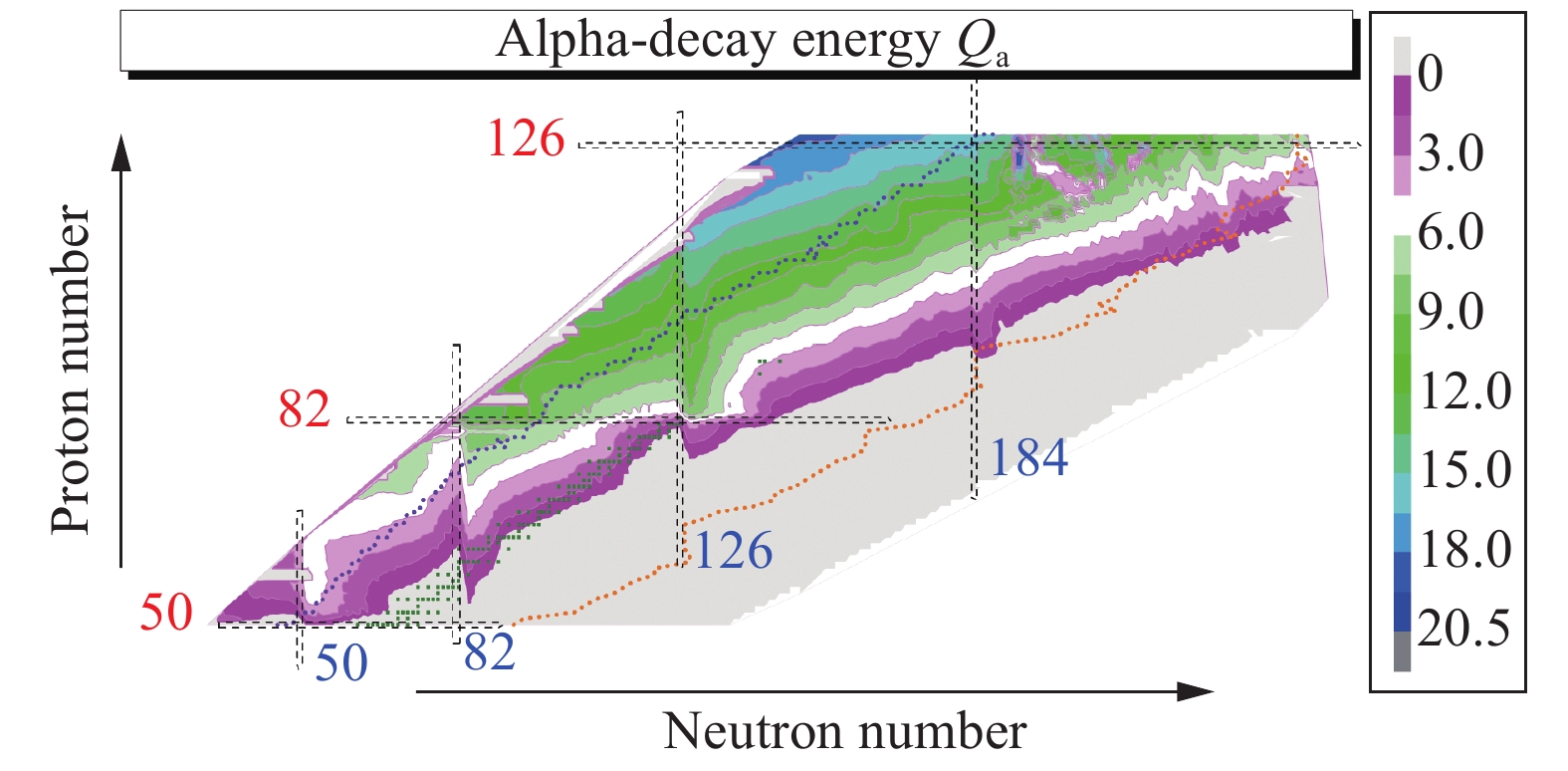 Figure13. (color online) Contour plots of
Figure13. (color online) Contour plots of As the alpha-decay energy,
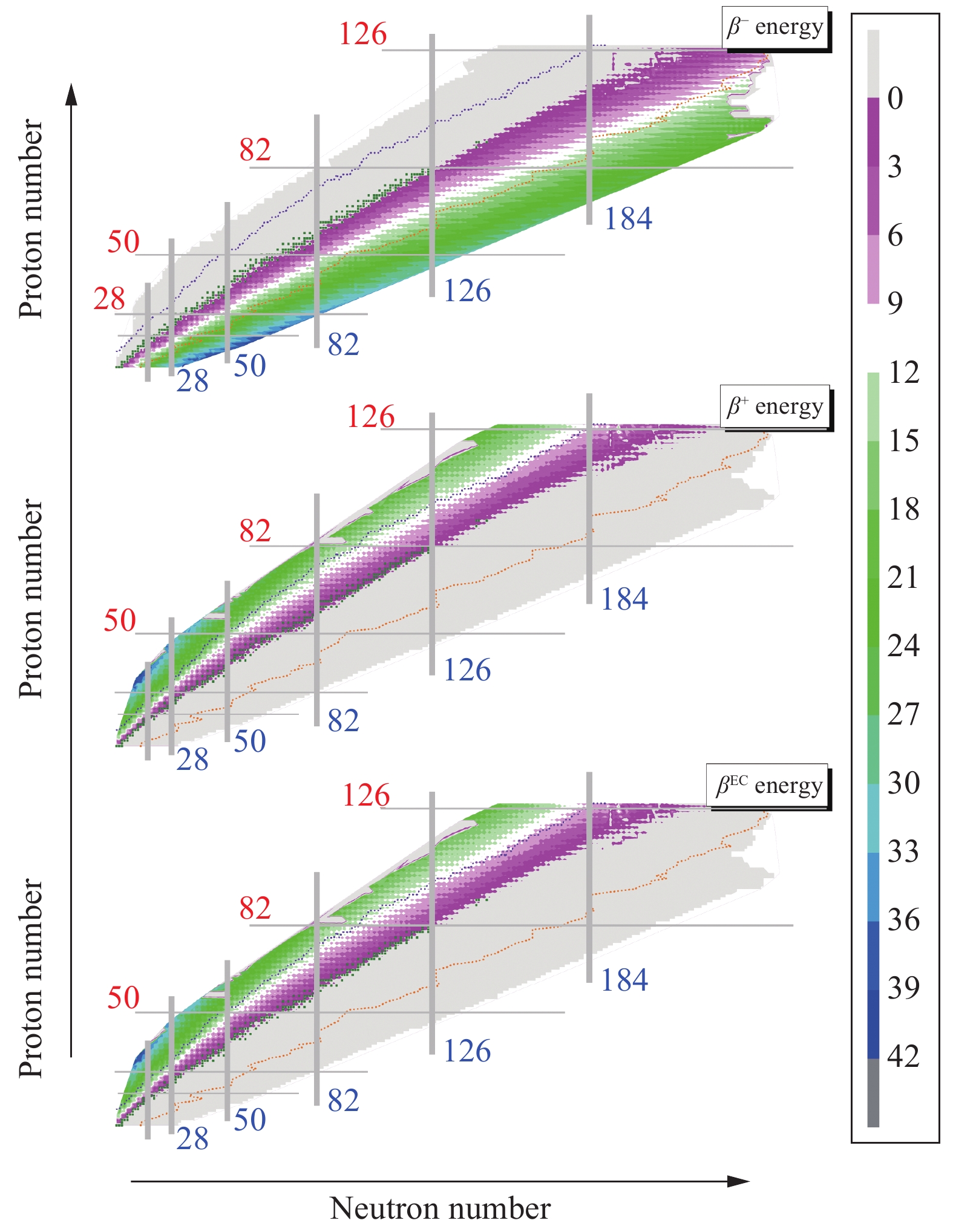 Figure14. (color online)Contour plots of three kinds of
Figure14. (color online)Contour plots of three kinds of 2
4.4.Neutron and proton pairing gap energy
In general, the phenomenological variation of the nuclear binding energy depends on the even and odd numbers of proton Z and neutron N. In other words, the systematic odd-even mass difference in nuclei, i.e. odd-even staggering (OES), was recognized previously and reflects the pairing correlation effect in nuclear structure. However, there is no direct way to measure the pairing effect. Theoretically, the five-point formulae are used to study the OES effect. For a given nuclear system with fixed N and Z, the expression of the neutron and proton pairing gaps can be written as [12, 87-89]$\begin{split}\Delta_{\rm{n}}^{(5)}(N)\equiv &\frac{(-1)^N}{8}[B(N+2, Z)-4B(N+1, Z)\\&+6B(Z, N)-4B(N-1, Z)+B(Z, N-2)], \end{split}$ | (32) |
$\begin{split}\Delta_{\rm{p}}^{(5)}(Z)\equiv & \frac{(-1)^Z}{8}[B(N, Z+2)-4B(N, Z+1)\\&+6B(N, Z)-4B(Z-1, N)+B(Z-2, N)].\end{split}$ | (33) |
Fig. 15 illustrates the differences in four categories between the experimental and theoretical pairing gap energy for 2267 nuclei, both calculated by five-point formulae. For even Z-even N and even Z-odd N groups in the upper panel of Fig. 15, the theoretical neutron pairing gap energy without the RBFs correction underestimates the real pairing gap values. Similarly, the calculated proton OES energies also underestimate the real values for even Z-even N and odd Z-even N groups in Fig. 15 (lower panel). By considering the RBFs correction, almost all deviations (red balls) populate the area between 0.4 and –0.4 MeV. Thus, we can make sure that the results improved by the RBFs correction yield a better agreement with experimental data.
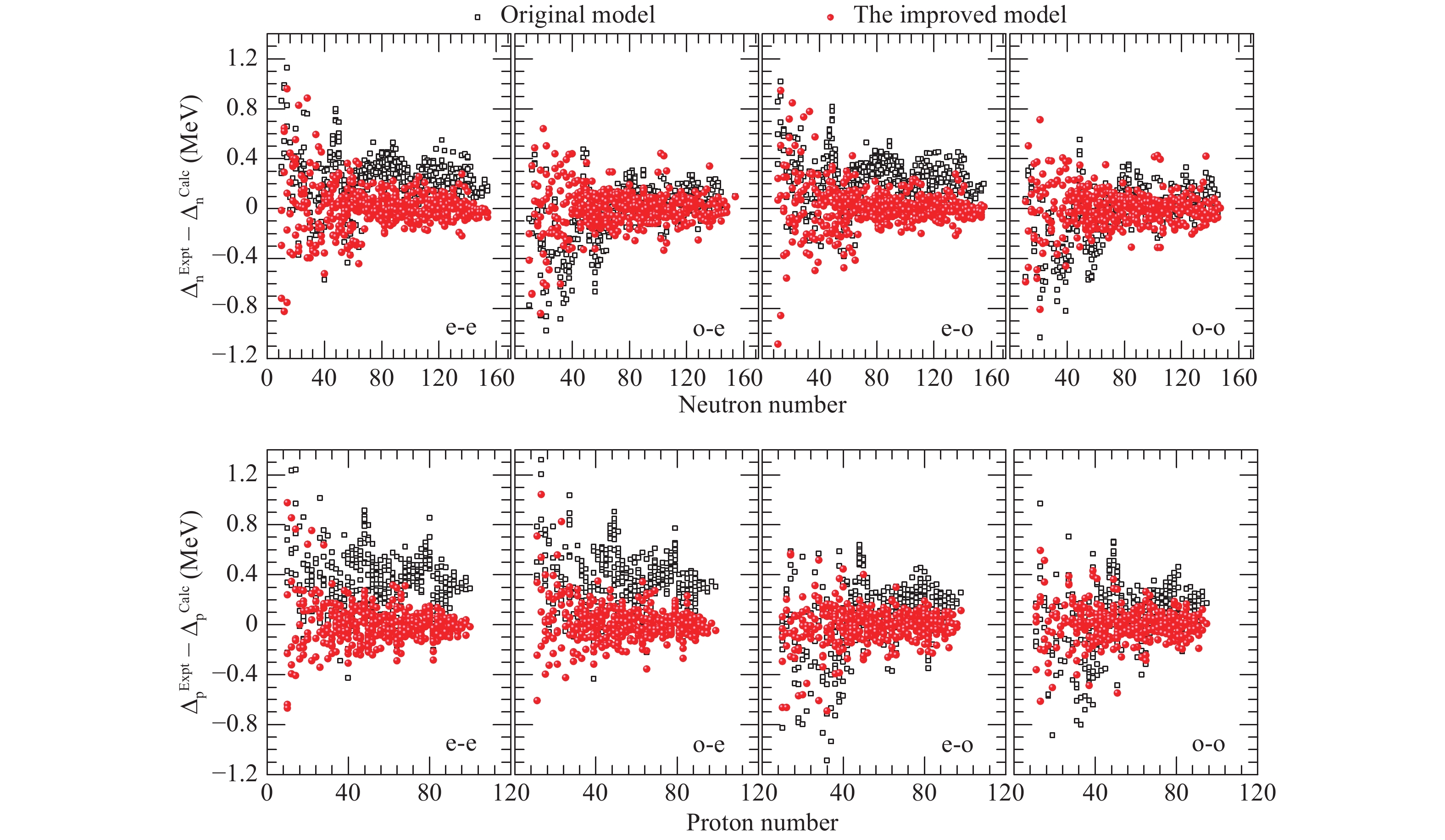 Figure15. (color online) Two kinds of deviations for 2267 nuclei between experimental neutron pairing gap energies and theoretical data [original results (black open squares) and improved results (red balls)], both calculated using five-point formulae [see Eq. (33)] are shown. Same as neutron OES, deviations for proton OES calculated using Eq. (35) are shown in lower panel.
Figure15. (color online) Two kinds of deviations for 2267 nuclei between experimental neutron pairing gap energies and theoretical data [original results (black open squares) and improved results (red balls)], both calculated using five-point formulae [see Eq. (33)] are shown. Same as neutron OES, deviations for proton OES calculated using Eq. (35) are shown in lower panel.Intuitively, the rms deviations
| models |   |   |   |   | |
  |   | ||||
| WS-Type | 277 | 351 | 115.59 | 209.50 | |
| WS-Type+RBFs | 169 | 150 | 8.25 | 2.60 | |
Table4.As inTable 2, but for neutron and proton OES values:
As for all aforementioned basic quantities, these two pairing gap energies are tabulated and attached in: https://github.com/lukeronger/NuclearData-LZU. Finally, neutron and proton pairing gap energies for the extrapolated 12435 nuclei are plotted in Fig. 16. Generally, neutron pairing gap energy decreases with increasing neutron number for an isotopic chain, while it increases with the proton number for an isotonic chain. Traditional neutron magic numbers are given in Fig. 16. Furthermore, N = 184 is a possible candidate of the neutron magic number. Meanwhile, the proton magic number at the proton shell closure is not so obvious. This is mainly because the pairing gap of
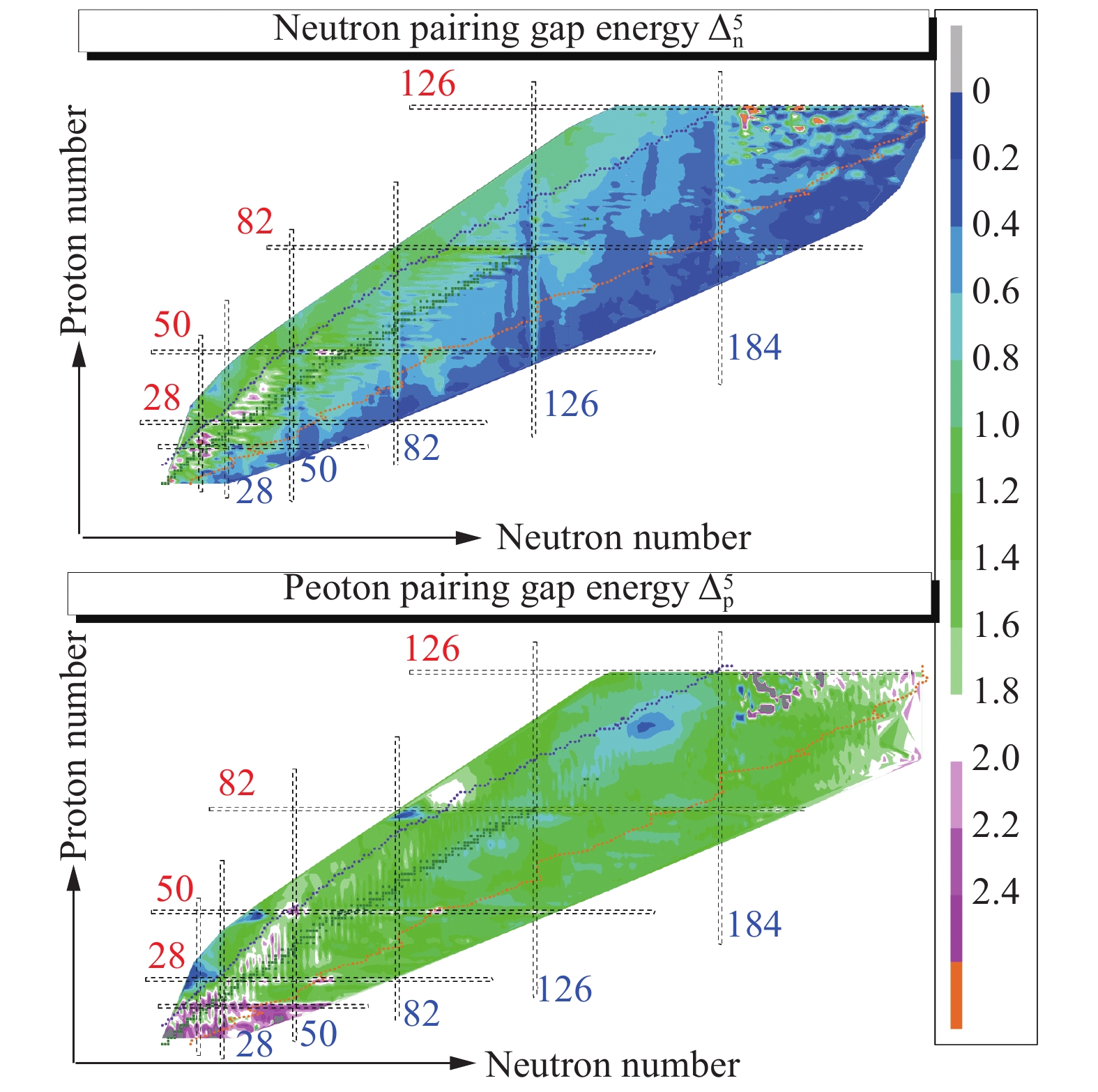 Figure16. (color online) As in Fig. 15, but for neutron and proton pairing gaps of 12435 nuclei.
Figure16. (color online) As in Fig. 15, but for neutron and proton pairing gaps of 12435 nuclei.Furthermore, in the framework of the improved WS-type model, the following physical quantities for the extrapolated 12435 nuclei (
We created a link to store the data package (see https://github.com/lukeronger/NuclearData-LZU). All physical quantities for the extrapolated 12435 nuclei in this data package are explained in Table 5. It can be downloaded by the git command or by contacting us via email (zhanghongfei@lzu.edu.cn).
We would like to thank Santosh Kumar Das and Baiyang Zhang for helpful discussions. N.M. is very thankful to Rong Wang for building this link.










